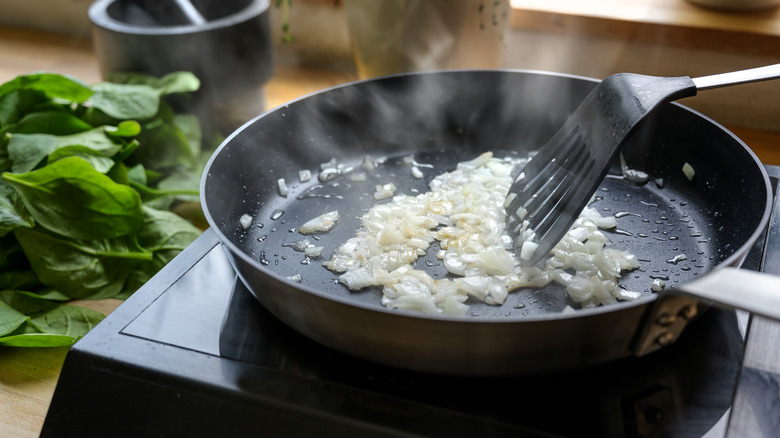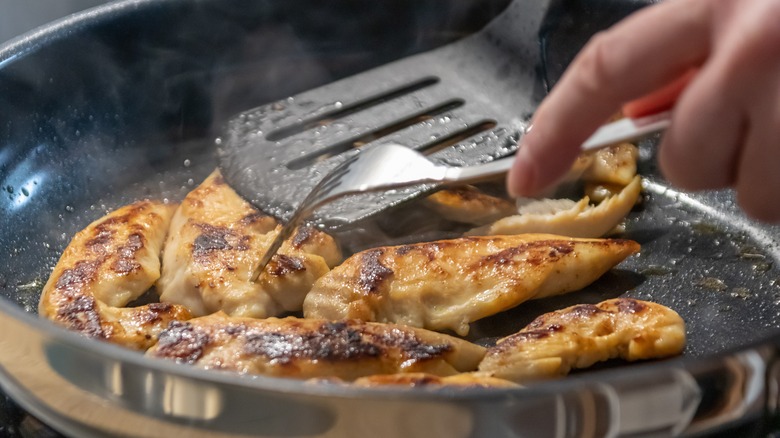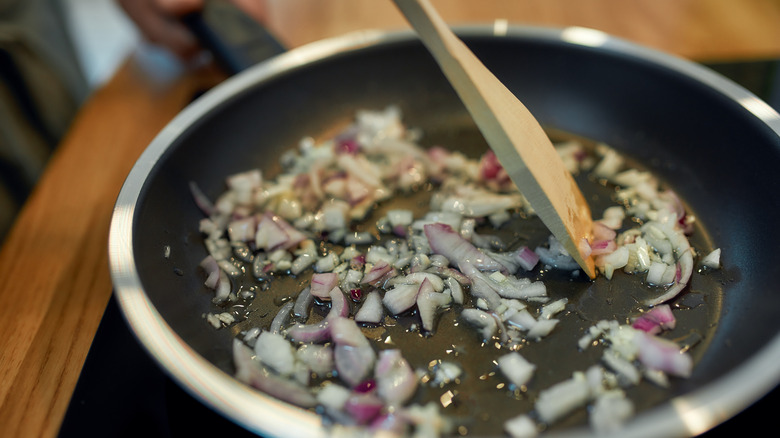The One Time You Should Think Twice Before Preheating Your Pan
When cooking in a hurry, it can be a serious pain to realize that you were supposed to be preheating your oven, air fryer, or skillet. While it might only be a case of a few minutes, when you're hungry or running behind those minutes can feel awfully long.
Do you really need to preheat your pan though? Can't you just skip this step without ruining the recipe? The answer is difficult because there are a lot of things to consider. Cast iron pans almost always need to be preheated. Their heavy construction means that it takes a while for the heat to transfer to every part of the pan. They also tend to have hot spots that absorb heat more quickly, so the warming-up time helps your heat even out.
Compare cast iron to carbon steel pans though, and you might find the opposite to be true. Carbon steel heats up significantly faster because it's lighter, so some recipes might benefit from starting in a cold pan.
Of course, appliance material isn't the only thing you need to worry about. The need to preheat also depends a lot on what food you're preparing.
When you need to preheat your pan
Why does preheating your pan matter so much? The easy answer is that it's going to provide consistent results when following a recipe. If you're going to be following along with a recipe and the provided cooking times, then you need to make sure that you're cooking in a similar environment. Cooking without preheating, whether that's in the oven or a pan, means that it will take your food longer to cook because it's spending more time at a lower temperature. In reality, you're not really saving much time by skipping that step.
Preheating the pan also prevents certain foods from sticking. The moisture on their surface evaporates the moment they hit the pan, and the force of that reaction separates the food from the cooking surface. This is especially true when pan-frying meats, vegetables, and sticky foods like eggs. This has a ton of benefits beyond keeping your pan clean as well. It will cook off excess moisture quickly so foods roast instead of steam, and create a beautiful charred surface on steaks and chops as well.
When you should skip preheating
Of course, there are plenty of exceptions and not everything will benefit from hitting a hot skillet. Gentle foods are going to require a more gentle heat. Anything that you're worried about burning, and typically foods that have a higher fat content will benefit from getting a slow start in a cold pan. Delicate spices, thinly sliced garlic, butter (even if you're browning it), and nuts should all start out in a cool pan. This will give you more control over their temperature as they cook, and prevent them from burning.
Cooking fatty cuts of meat like bacon or chicken thighs will also go better in a cold pan. While some cuts of meat, especially the more tender ones, will benefit from quick cooking times in a hot pan, that isn't always the case. By starting these fat-heavy cuts of meat in a cold pan, the fat has time to render out of the meat when it comes to temperature. They should then brown nicely while cooking in their own fats.
Caramelized onions also benefit from a cold pan. This allows the majority of the water in the onions to evaporate before the sugars begin to caramelize. Following this method ensures a deep caramel color, with the rich savory notes, and gentle texture that one expects from caramelized onions.


